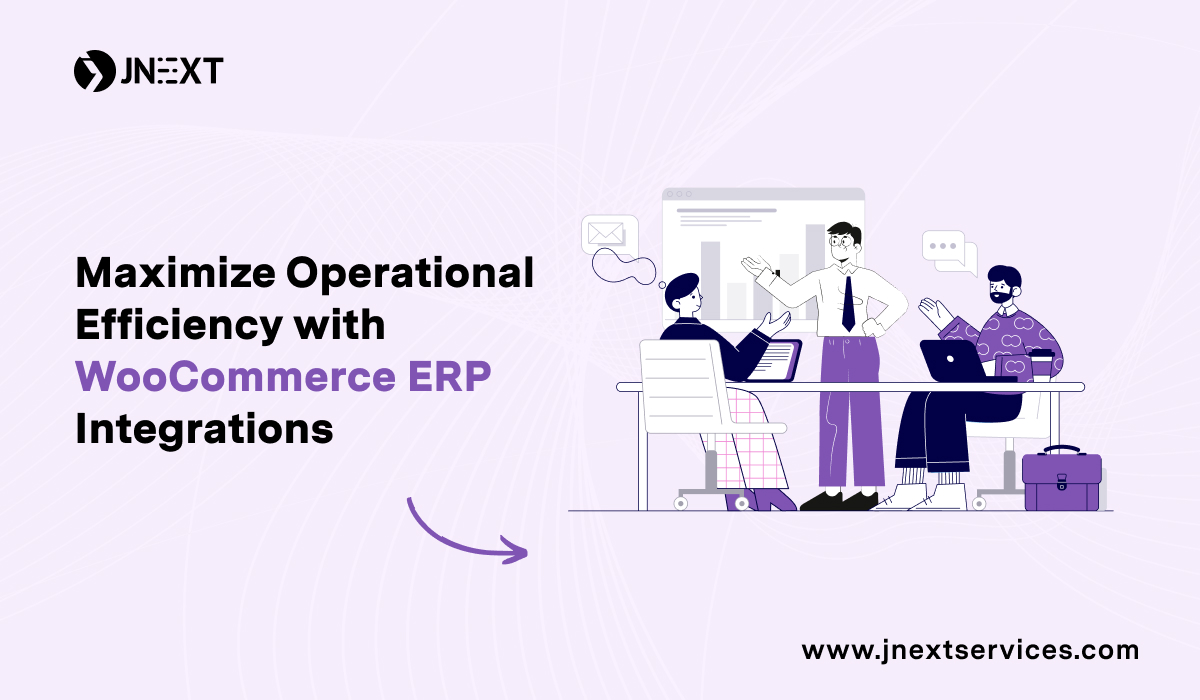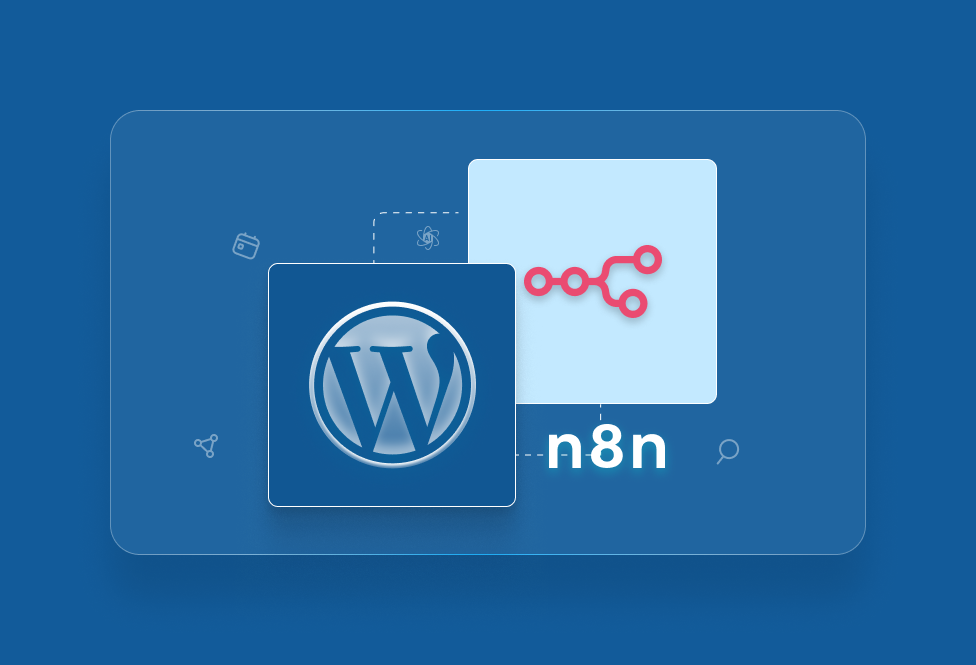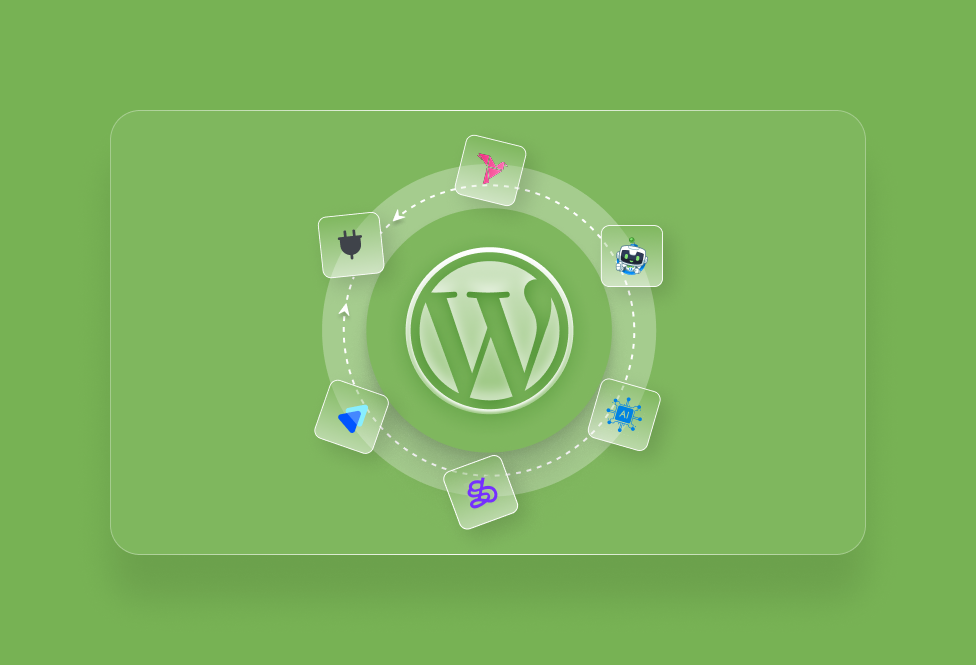“eCommerce in 2025 is too competitive and highly saturated. It requires you to juggle between multiple tasks like inventory management, order processing and customer engagement. You shouldn’t get into it unless you have a big pocket.”
That’s what everyone says! But is it really that hard?
Not if you do it the right way. You can automate almost anything and everything using ERP today and focus on what’s important.
So, instead of juggling between multiple tasks, you can focus on products, marketing and most importantly your customers.
Lets learn how WooCommerce ERP integrations can make your life so much easier.
How ERP automation with WooCommerce can increase your operational efficiency?
Real-Time Inventory Management
With WooCommerce ERP integrations, you can keep your inventory levels updated in real time. So, you will know when your inventory is running out of stock or overstocked.
It reduces the manual tracking, saves time and efforts that usually go into managing orders. It improves the overall accuracy of your inventory while cutting down on unnecessary expenses.
Automated Order Processing
From placement to fulfillment, WooCommerce ERP integrations help you automate everything. Orders are automatically routed to the appropriate departments, so they are quickly processed and tracked. It reduces the manual work, speeds up delivery times and improves the overall customer experience.
Centralized Data Management
eCommerce businesses often struggle with handling data from sales, inventory and customer services. WooCommerce ERP integrations bring everything in one place, all under a single roof So, you don’t have to use multiple tools. A centralized system improves team collaboration and also improves your team collaboration and provides them a single view into your business operations to make smarter decisions.
Improved Financial Tracking
When ERP systems are integrated with WooCommerce, it automates financial tasks like generating invoices, calculating taxes and reconciling payments. This automation helps you reduce manual errors and improve financial accuracy. You also get real time insights on cash flow, so you can budget accordingly and plan for your business growth.
Enhanced Customer Relationship Management (CRM)
WooCommerce ERP integrations centralize customer data, including purchase history and preferences. It enables you to offer personalized services. By understanding customer behavior, you can create targeted marketing campaigns and increase conversions. Also, you can provide reliable support which increases customer loyalty overtime.
Efficient Supply Chain Management
As an eCommerce business owner, you know how complicated supply chains can get if you don’t do it right. And its impact on business is huge. So, ERP streamlines everything by automating tasks like purchase order creation, vendor communication and shipment tracking. Again, it’s like a centralized system that reduces delays and restocking while ensuring better vendor coordination. As a result, businesses can maintain a smooth and efficient supply chain.
Data-Driven Decision Making
WooCommerce ERP integrations is not just above bringing everything into one place. It’s about making businesses more efficient by providing insights into business operations, supply chain and customer behavior. It provides key metrics like sales trends, customer preferences, and operational performance. These insights allow businesses to forecast demand, optimize their strategies and make informed decisions that align with the business growth.
So, that is how ERP improves operational efficiency for eCommerce businesses. Here is a table showing a comparison between how businesses would operate with and without ERP.
Comparison: With ERP Vs. Without ERP
| Parameter | Parameter | Without ERP |
| Inventory Management | Manual tracking; prone to errors; time-consuming | Automated updates; real-time accuracy; saves time |
| Order Processing | Manual order entry; delays and errors common | Automated processing; faster fulfillment; fewer errors |
| Data Accuracy | Fragmented data; inconsistencies across departments | Centralized data; consistent and up-to-date information |
| Customer Management | Limited customer insights; generic engagement | Personalized insights; targeted marketing; better retention |
| Financial Tracking | Manual calculations; high chance of errors | Automated tracking; accurate and detailed reports |
| Supply Chain Management | Lack of automation; delays in procurement and restocking | Streamlined processes; automated vendor coordination |
| Decision Making | Limited insights; decisions based on guesswork | Advanced analytics; data-driven and strategic decisions |
Real World case studies of ERP integration with eCommerce
Pet Products Retailer: NetSuite and WooCommerce Integration
A leading pet products retailer was facing challenges with order management, inaccuracies in inventory, and manual data entry. So, they integrated WooCommerce with NetSuite. And they have achieved some amazing results with real time inventory synchronization, automated order processing and insights into customer behavior.
Result:
- 50% reduced processing time
- 99% improved inventory accuracy
- Supported a 40% increase in order volume
- Saved 20 hours weekly on manual data entry
The results are definitely amazing and it is worth investing in an WooCommerce ERP plugin. But the question is which one?
Before exploring the plugin, let’s take a look at some of the features that your ERP plugin must have.
Features to look for when choosing WooCommerce ERP integration
Compatibility with WooCommerce
It is not something that needs to be said, choosing an ERP system, always check that it easily integrates with WooCommerce.
Scalability
Choose an ERP system that can handle increasing data and processes. So as your business grows, you can use ERP for seamless operations without any performance issues.
Real-Time Synchronization
Look for real-time data updates between WooCommerce and the ERP system to ensure accuracy and quick decision-making.
Customization Options
The ERP system should be adaptable to your unique business workflows and processes for maximum efficiency.
User-Friendly Interface
Choose an ERP that offers an interface your team is comfortable with. It reduces the learning curve and helps them make the most out of the ERP system.
Robust Reporting and Analytics
Ensure the ERP provides advanced analytics and detailed reports for data-driven insights and strategic planning.
Reliable Support and Documentation
Select a solution with comprehensive support and documentation to resolve issues and streamline implementation.
Top WooCommerce ERP plugins for small businesses and enterprises
Odoo
Odoo is an open source ERP and CRM platform. You can easily integrate it with WooCommerce. It syncs the products, orders and customer data automatically and simplifies your operations.
Features:
- Open-source platform
- Customizable modules
- Real-time WooCommerce synchronization of inventory and orders.
- Centralized customer and sales data
- Designed for small as well as large scale businesses.
Microsoft Dynamics 365 Business Central
Microsoft Dynamics 365 Business Central is not exactly an ERP, it’s a business management solution. It integrates with WooCommerce so you can streamline processes like sales, operations, and finances. It offers you a centralized view where you can check your inventory, customer interactions and financial data.
Features:
- Management tools for sales, service, and finance.
- WooCommerce integration
- Automation of repetitive tasks
- Real-time tracking of inventory and customer data.
- Built-in analytics and insights
NetSuite
NetSuite is a cloud-based ERP solution that provides you with tools for financing, CRM and eCommerce. It also integrates with WooCommerce so you can manage everything in one place.
Features:
- Cloud-based platform
- Comes with complete set of tools for finance, inventory and order management
- Real-time data synchronization
- Advanced analytics and reporting
- Automation for order fulfillment and financial processes.
Brightpearl for WooCommerce
Brightpearl is another WooCommerce integration that helps you manage your inventory, orders and customer data. They have designed the integration to help you automate key processes, reduce errors and improve the overall efficiency to grow the business.
Features:
- Real time sync for products and inventory management.
- Automated order processing and payment recording.
- Manage shipping updates directly in WooCommerce.
- Streamline returns and refunds
- Centralized customer data
Conclusion
eCommerce is changing with AI, AR and new technologies. So, eCommerce ERP automation is not an option anymore. It is a must have for every eCommerce business to compete with others in a saturated market(It’s true but you can still make it). You can make it with the right team and approach.
At Jnext, we are a custom WooCommerce plugin development agency and consultants. With our expertise and experience in the eCommerce industry, we provide recommendations so you can improve your operations and sales. Also, we focus on every aspect of your business in order to build custom solutions and strategies for your business growth.


 January 30, 2025
January 30, 2025






TEAM id
jnext_services
email us [email protected]
india
+91 98587 63596
United Kingdom
+ 44 77679 57915